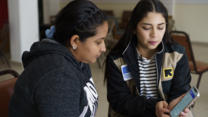The International Rescue Committee's Client Voice and Choice initiative and Ground Truth Solutions are piloting an approach to better understand and strengthen how humanitarian assistance incorporates the preferences, aspirations, and expectations of the people at the focus of aid. This document details the methodology and findings of the pilot examining the Women’s Protection & Empowerment (WPE) and Water, Sanitation & Hygiene (WASH) services being delivered in camps serving refugees in northern Greece.
The case study documents a number of lessons learned about how to implement an effective feedback mechanism. Two of the most important lessons learned in the Greece pilot were as follows:
Summary of Key Learning from this Pilot:
• Ownership, empowerment and accountabilities: The M&E team played a key role in facilitating the collection, presentation and analysis of client feedback in the pilot. Going forward we recommend they continue to perform this function, drawing upon the information needs of programme teams. Programme Coordinators should be accountable and responsible for the interpretation of client feedback, and for taking decisions about how to respond to it. Alongside Senior Management, they also play an important role in communicating the value of client responsiveness to front line staff, and for modelling responsive behaviour by empowering front line staff to share the feedback that they hear from clients and their own feedback.
• The feedback cycle as a management tool: A decision about how to respond to client feedback is never taken in isolation of other information inputs: client feedback needs to be triangulated with, inter alia, contextual analysis, industry best practice and the programme team’s own experience. Programme decision makers should think about ways to communicate the rationale for a decision to key stakeholders, including clients and front line staff, and they should consider ways to present contextual and programming information alongside client feedback so to contribute to the reader’s understanding of client satisfaction.
• Adapting the feedback channels to the context: A feedback mechanism needs to be designed according to the individual programme and operating context in which it will be used. Given that this context will change over time, so the feedback mechanism should be adapted. In the Greece context, the clients whose feedback was being collected frequently changed; the government permissions and policies fluctuated; and the programme evolved both in terms of its activities and its staffing. This implies a need for changes to the data collection (what we ask, how we ask it and how often) as well as how decisions are taken about how to respond (which fora, at what frequency, by whom etc.).
• Closing the loop: The programme teams often struggled to adequately explain to clients how they were able to or had decided to respond to client feedback. Whilst there will always be a need to be sensitive about how explanation is done (either due to the reasons for the decision or due to the potential negative reaction from clients). However, this step is extremely important for creating trust between the clients and the programme teams – reflecting principles of respect and dignity in the way humanitarian agencies interact with affected populations – and ensuring that the feedback mechanism will continue to be used.



